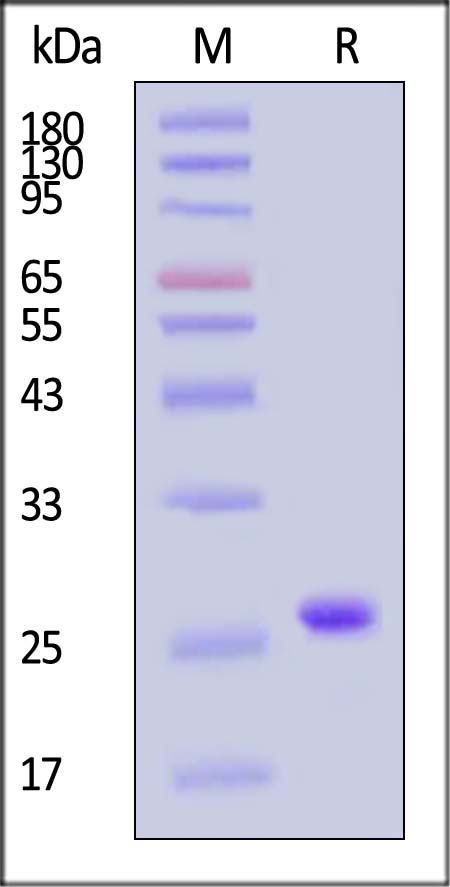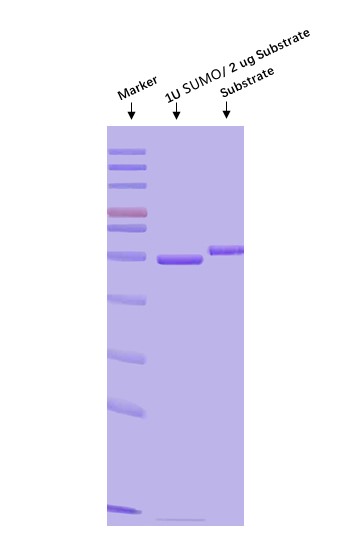SENP1-SIRT3 axis mediates glycolytic reprogramming to suppress inflammation during Listeria monocytogenes infectionXiong, Du, Lin
et almBio (2025)
Abstract: Listeria monocytogenes, a foodborne pathogen, has the ability to invade intestinal mucosal cells, undergo intracellular proliferation, activate host immune responses, and induce diseases such as colitis. We have demonstrated that sentrin-specific protease 1 (SENP1) functions as a protective gene in the host, suppressing the inflammatory response triggered by Listeria monocytogenes. The host's SENP1-SIRT3 axis plays a critical role in regulating inflammation during Listeria monocytogenes infection. Our findings reveal that overexpression of SENP1, particularly under Listeria monocytogenes infection conditions (MOI = 20), effectively suppresses inflammation through modulation of glycolysis. Mechanistically, during Listeria monocytogenes infection, SENP1 accumulates in the mitochondria, facilitating the de-SUMOylation and activation of sirtuin 3 (SIRT3). Activated SIRT3 then regulates the deacetylation of pyruvate kinase M2 (PKM2), leading to a decrease in glycolytic intermediates, downregulation of glycolysis-related gene expression, and suppression of inflammation. Taken together, our study provides a deeper understanding of the mechanistic role of the SENP1-SIRT3 axis in the regulation of inflammation, offering novel insights, and strategies for the treatment and prevention of inflammatory diseases.Sentrin-specific protease 1 (SENP1)-sirtuin 3 (SIRT3) has never been reported in the regulation of bacteria-induced inflammation. Our study demonstrated that SENP1 acted as a protective factor against Listeria-induced inflammation by promoting SIRT3 activation and subsequent metabolic reprogramming. The SENP1-SIRT3 axis served not only as an essential signaling pathway for regulating mitochondrial metabolic responses to metabolic stress but also responds to bacterial invasion and plays a protective role in the organism. Our findings provide a basis for further research into targeting the SENP1-SIRT3 signaling pathway for the treatment of bacterial infections.
Mechanistic Insights into SENP1 and OCT4 Interaction in Promoting Drug Resistance and Stem Cell Features in Colon CancerZou, Chen, Deng
et alAm J Physiol Cell Physiol (2025)
Abstract: This study explores the molecular mechanism by which sentrin/SUMO-specific protease 1 (SENP1) promotes cisplatin (Cis) resistance and tumor stem cell characteristics in colon adenocarcinoma (COAD) through desumoylation-mediated modification of octamer-binding transcription factor 4 (OCT4). By analyzing single-cell and transcriptome sequencing datasets, we identified key genes and regulatory pathways in both resistant and sensitive COAD cells. Malignant cells were isolated and evaluated for stemness using the infercnv package, and differential genes between Cis-resistant and -sensitive groups were identified. Machine learning algorithms highlighted essential genes, and databases predicted interaction sites between OCT4 and SENP1. In vitro experiments using enriched HCT116 stem cells revealed that SENP1 and OCT4 expression significantly elevated CD44 and CD133 levels, enhancing stemness. Functional assays showed that SENP1's desumoylation of OCT4 intensified Cis resistance, migration, and invasion in cisplatin-resistant cell line 116 (Cis-116) cells. In vivo, SENP1 knockdown reduced tumor growth and stem cell markers, while OCT4 overexpression escalated tumor metastasis and structural damage. These findings demonstrate that SENP1's modulation of OCT4 is central to COAD's resistance and stem cell properties, offering a novel target for COAD therapy.
SUMO4 promotes SUMO deconjugation required for DNA double-strand-break repairGarvin, Lanz, Ronson
et alMol Cell (2025) 85 (5), 877-893.e9
Abstract: The amplitudes of small-modifier protein signaling through ubiquitin and the small ubiquitin-like modifiers, SUMO1-3, are critical to the correct phasing of DNA repair protein accumulation, activity, and clearance and for the completion of mammalian DNA double-strand-break (DSB) repair. However, how SUMO-conjugate signaling in the response is delineated is poorly understood. At the same time, the role of the non-conjugated SUMO protein, SUMO4, has remained enigmatic. Here, we reveal that human SUMO4 is required to prevent excessive DNA-damage-induced SUMOylation and deleterious over-accumulation of RAP80. Mechanistically we show that SUMO4 acts independently of its conjugation and potentiates SENP1 catalytic activity. These data identify SUMO4 as a SUMO deconjugation component and show that SUMO4:SENP1 are critical regulators of DNA-damage-induced SUMO signaling.Copyright © 2025 The Author(s). Published by Elsevier Inc. All rights reserved.
SENP3 Drives Abdominal Aortic Aneurysm Development by Regulating Ferroptosis via De-SUMOylation of CTHChen, Cai, Xiao
et alAdv Sci (Weinh) (2025)
Abstract: Abdominal aortic aneurysm (AAA) is a high-risk inflammatory disorder. SENP3, a SUMO2/3-specific protease, is closely involved in the development of cancer. In this study, the aim is to explore the role of SENP3 in macrophages in AAA. It is found that the protein expression of SENP3 is significantly upregulated in both human and murine AAA specimens. SENP3 expression is negatively regulated by the E3 ubiquitin ligase STUB1/CHIP. Furthermore, myeloid-specific SENP3 knockout inhibited AAA formation in both AngII- and CaCl2-induced mouse models. SENP3 deficiency repressed AAA lesion macrophage infiltration and inflammatory response. Mechanistic studies identified Cystathionine Gamma-Lyase (CTH), a critical enzyme involved in hydrogen sulfide production, as a target protein of SENP3 that mediated the exacerbating effects of SENP3 on ferroptosis and inflammatory programs in macrophages. SUMO-3 modification at Lysine 361 promoted CTH protein stability, whereas de-SUMOylation by SENP3 facilitated its proteasome-dependent degradation. Most importantly, it is found that CTH inhibitor counteracted the protective effect of SENP3 deficiency on AAA. Additionally, supplementation with ATB346, a novel H2S-donating naproxen derivative, prevented AAA development in mice. These studies suggest that SENP3-mediated CTH deSUMOylation regulates macrophage ferroptosis and AAA development. The SENP3/CTH axis is therefore an important therapeutic target for aortic aneurysmal diseases.© 2025 The Author(s). Advanced Science published by Wiley‐VCH GmbH.

























































 膜杰作
膜杰作 Star Staining
Star Staining















